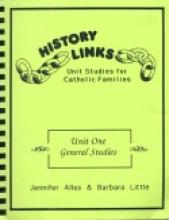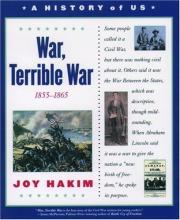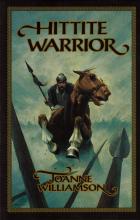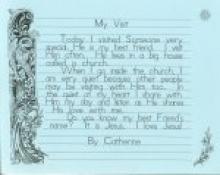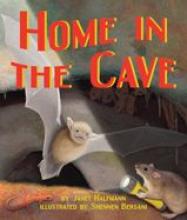No name
History Links - General Studies and Ancient Egypt
History Links: Unit Six – Ancient Greece
This unit on Ancient Greece is not a structured, day-to-day lesson plan. Rather, it is organized to guide you to develop your own daily plans and longer term assignments. The book begins with traditional Catholic prayers and patriotic hymns derived from Greek that can be learned during the unit and used for memorization, dictation, copywork or spelling. Next is a lengthy list of topics that will be studied and a listing of specific books, church documents, videos, and internet sites. These lists will help you to gather materials for your students to use during the study of Ancient Greece. The "preparation" section ends with vocabulary and spelling lists and a timeline.
The bulk of the unit is organized in outline style, with many, many suggestions of things to do as you explore Ancient Greece. Each of the topic headings and activity suggestions includes background teaching information, which I think is one of the best features of the program. The activity suggestions are coded with an age recommendation and a subject classification. For example, some activities are best-suited for preschoolers or elementary students, while others are best for middle school students or high school students. Each page also includes ideas for including babies and toddlers in the activities! Main subjects covered include religion, language arts, literature, research skills, critical thinking, and geography. Some suggestions also include study in foreign language, math, science, citizenship, architecture, art, crafts, drama, music, and physical education.
The authors recommend spending approximately 2 months on this unit, but there are so many things to do that you could easily spend much longer on this time period. I think that these courses are wonderful all by themselves, but they would also be very useful as a supplement. If you are enrolled with a formal curriculum such as that of Kolbe Academy or the Angelicum Academy, you could use History Links to add some fun projects and a Catholic perspective to the courses. History Links really are family-centered education, making learning fun and memorable.
History of Us, Volume 6: War, Terrible War
This is an interesting, very readable overview of the Civil War. There is a significant focus on the issue of slavery as a plague upon American culture of the time. The author's basic thesis is that, while different people fought for different reasons and the focus was especially blurred when the war began (when there was more emphasis on preservation of the union), the war was essentially fought over the issue of slavery.
Although the author herself is not consistent on this issue in her final volume, a lot can be learned from studying her stories, ideas and conclusions about slavery in light of the current abortion debate. A thoughtful older student might even study this volume thoroughly and compare it with Hakim's significantly-problematic treatment of the 20th century. Hakim makes a significant effort to be fair to the intentions of both North and South while clearly believing that the North has the upper moral hand on the slavery issue.
Although the writing style is quite engaging, all the side bar quotes and information do make a cover-to-cover reading a little choppy. This volume could be used very beneficially as a "spine book" to tie together a study of the Civil War with an emphasis on great stories such as Uncle Tom's Cabin and Killer Angels. Most approriate for grades 6-8 but usable for anyone studying the Civil War. The book can have the effect of kindling an interest in the topic and inviting the student to learn more on their own.
Hittite Warrior
This is a rather interesting story, set in Biblical times (about 1200 B.C.) of a great battle led by the Hebrew Barak (at the time of Deborah) and told from the perspective of a young Hittite Warrior, Uriah – one of the enemy. The story gives the reader a real sense of the culture of the time – from the land of the Hittites, to Ancient Israel, to the major Canaanite cities of Tyre and Sidon (where the people fearfully sacrifice a child to the god Moloch in time of difficulty). Through the shock of becoming involved in rescuing a child from Moloch against his will, Uriah becomes involved with the Hebrews and eventually comes to see difficulties with the pagan beliefs. The author also ties in details of Ancient Egypt and Ancient Greece from the same time period.
It's so important to have books which tie Biblical and other historical events together – helping us to better understand the Old Testament.
Hold That Thought: History Volumes 1 and 2
Each CD-ROM contains hundreds of files in pdf format that can be easily printed at home on either a PC or a MAC, demanding no flash trips to the copy shop or weeks of pre-planning. Volume 1 covers the highlights of world history from ancient times through the period of European exploration in over 350 worksheets. Volume 2 begins with European exploration, continues with United States history, and concludes with modern world history in over 600 worksheets. Don't be misled by the term "worksheet". These are not fill-in-the-blank worksheets, but more like "picture pages" that include a picture that can be colored as well as lines for the student's writing. Pages feature important biographical characters, events, geographical regions, and even architectural achievements; the range of Who? What? Where? and When? are available. Detailed content lists are available at the publisher's website.
In addition to these picture pages, the CD-ROMs contain many special features. I especially like the "first draft" sheets that are available to help more inexperienced writers with identifying important information that should appear in their reports. One of my boys loves the newspaper-reporter style of some of the historical event worksheets. Suggestions for extension activities and coloring pages are included for some events, and outline maps are another convenience.
Because the contents are extensively indexed and cross-referenced alphabetically and by date, these CD-ROMs can be used equally well by families who prefer textbooks to those who prefer a "living books" approach to those who utilize unit studies. Our family uses the IEW writing method (reviewed elsewhere) with a classical approach to history, and we have found a seamless mesh using these worksheets. Unlike materials that contain preprinted text, there are no interpretations of historical details that require editing or quibbles to reflect our beautiful Catholic faith. The producers of these materials are Christian, and significant religious figures have been included. However, don't expect to find all of the Popes or lesser-known Catholics; more generic pages can be used for these people.
These CD-ROMs make notebooking a pleasure and provide a concrete way to summarize a child's study, using his or her own words and work. The pages can be used to make special topical notebooks, added to a Charlotte Mason-inspired Book of Time, used to enhance daily work or formal assignments, or even included in an annual portfolio. I can also imagine using the sheets in 4-H reporting projects, Scouting reports and merit badge work, co-op classes, or even using the pictures to make posters. The liberal copyright allows the contents to be used by the purchaser's own immediate family or for any class that the purchaser teaches, so long as no money is charged for them. Finally, I must note that the customer service that I received was exceptional. My order was received very, very quickly, and a minor problem was straightened out immediately and far more generously than I have experienced before. All things considered, Hold That Thought's History Volumes 1 and 2 are our family's "top pick" of new materials for this school year.
Holy Names of Jesus: Devotions, Litanies, and Meditations
Did you know that Jesus is also known as "Divine Mercy" and "The Incarnate Word"? OK, those were easy ones. Do you know the story of the "Infant Jesus of Prague" or "The Black Christ of Esquipulas"? Mrs. Ball has written an interesting book describing the numerous names by which Our Lord has been known throughout time and throughout the world. The earliest names, of course, come from the Bible, but many of the others have been made known through the writings of the saints, visions, and documented miracles. Others are simply devotional. She says that her goal is "that a study of some of His holy names will call forth a greater love of Him Who is Love" (p. 9). In addition to the main text, Mrs. Ball includes the Litany of the Most Holy Name of Jesus, a lovely prayer, as well as an extensive bibliography.
This book is laid out in short sections that may be read in a few minutes while providing food for thought for hours. Forty-four names by which Jesus is known have been listed and described, with a short prayer or meditation after many of them. Those names whose origin is well-known have longer passages than those names that are less familiar. I must admit that two of the passages struck me as a bit odd: the one titled "Cosmic Christ–-Jesus, Priest" which is a modern piece of poetry and the one titled "Jesus, Our Mother", which is a commentary of the universal natures of Christ. Both seemed out of place and less than reverent, but the book has both the "nihil obstat" and an imprimatur. Most of the remaining names were familiar to me and quite traditional.
Imprimatur and Nihil Obstat
Holy Papers
This booklet provides thirty-three pages of lined paper with beautiful Catholic pen and ink illustrations. The pages are intended for handwriting practice and may be photocopied for use within your own family. Following the lined pages are approximately forty pages of beautiful religious quotes - printed in both script and cursive - for practicing handwriting. Quotes are organized according to themes such as Adoration, Conscience, Eucharist and Obedience.
Binding details: paper pad binding
Home Educator's Lesson Planner
Designed to keep track of one child's lesson plans for a year, this organizer has several features that would please both the structured homeschooler or those who prefer unit studies. This comb bound planner includes an attendance record as well as pages for expenses, projects and field trips, book lists, progress reports, grading, monthly overview and 70 lesson plan pages with two pages covering each of 35 weeks. The Home Educator's Lesson Planner is unique in that the lesson plan pages provide rows but not columns, allowing the parent to determine the number of columns based on subjects studied. Older students could also use this planner to track their assignments and performance.
This planner was donated for review by H.E.L.P. Press

